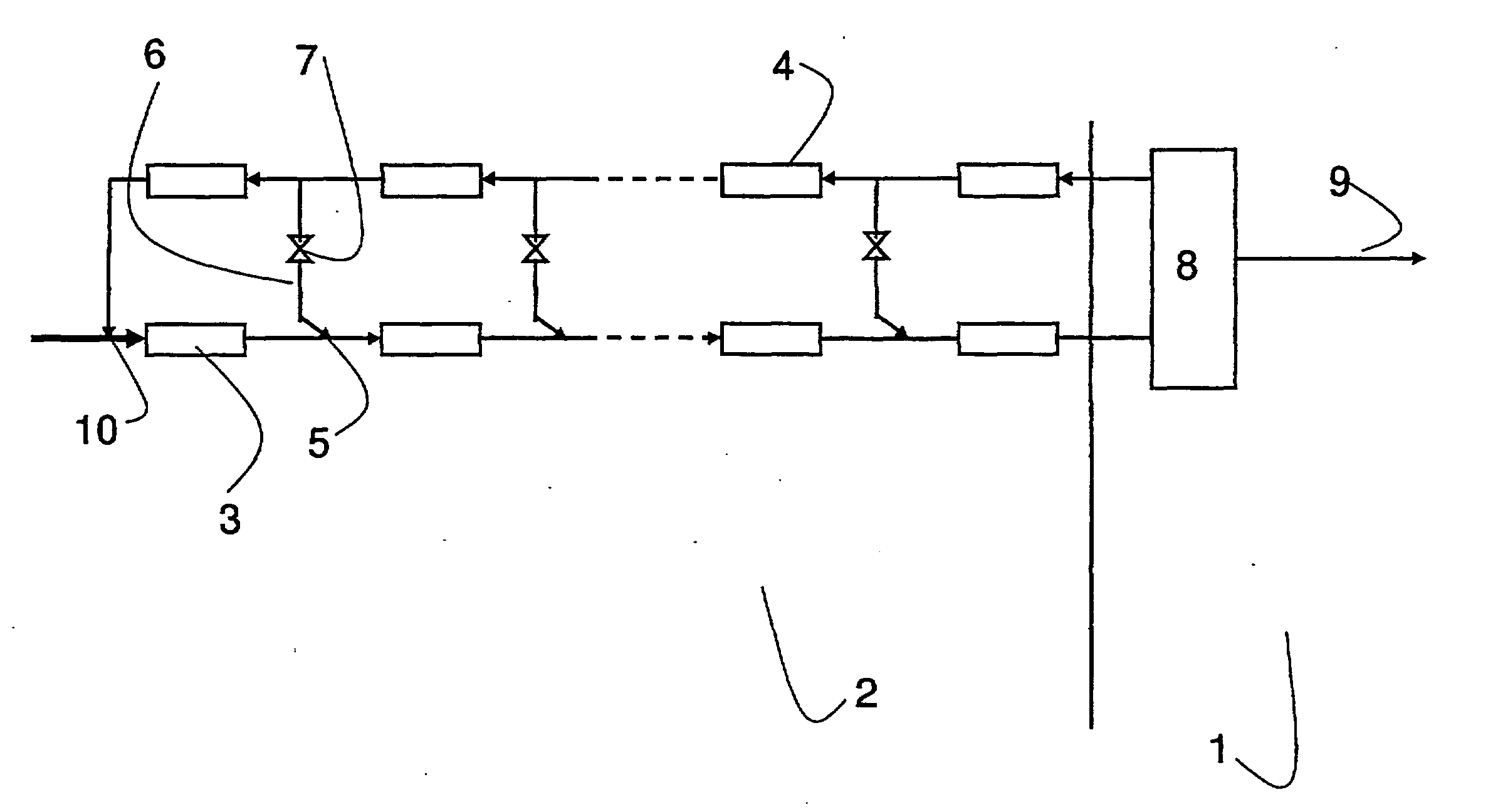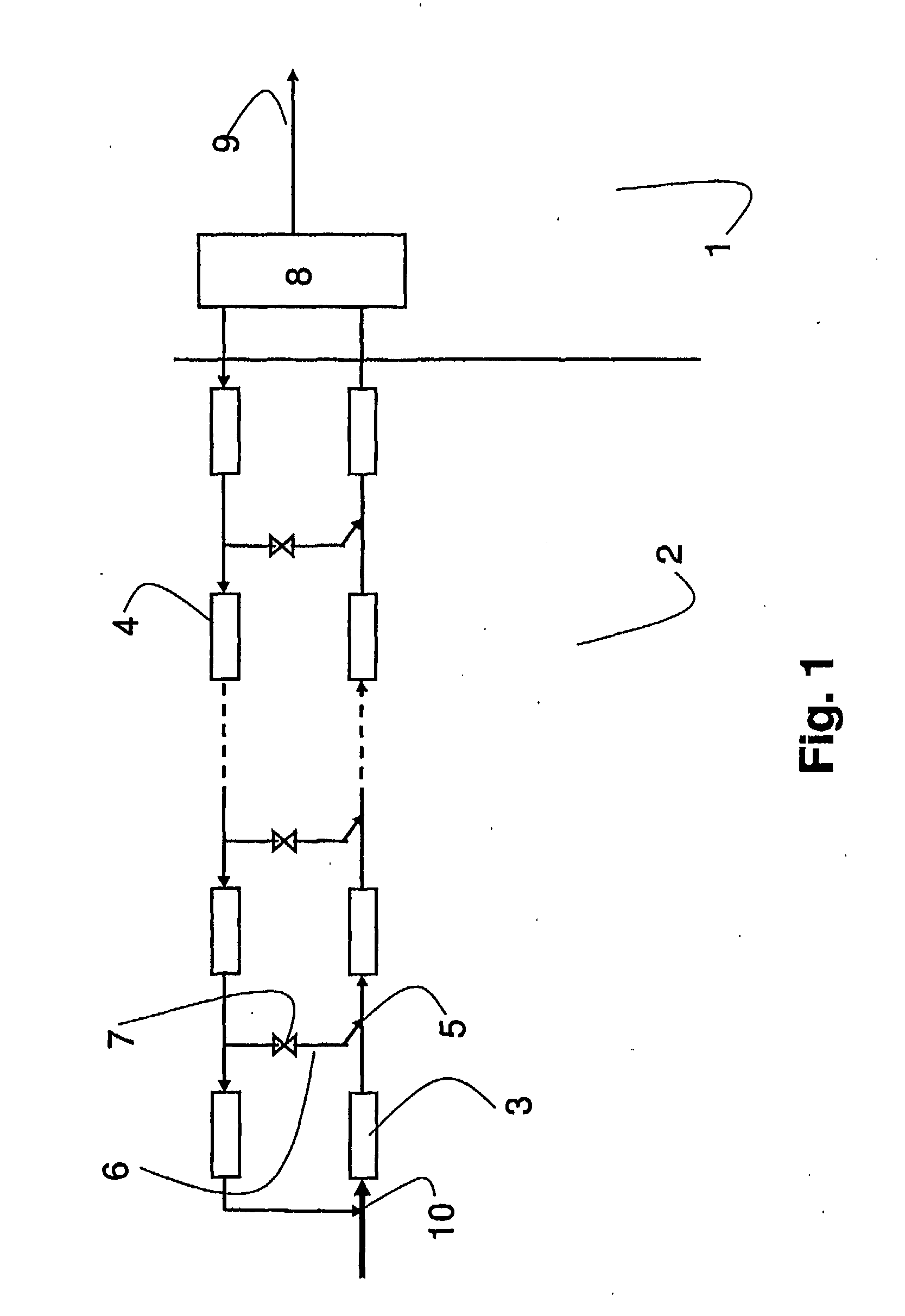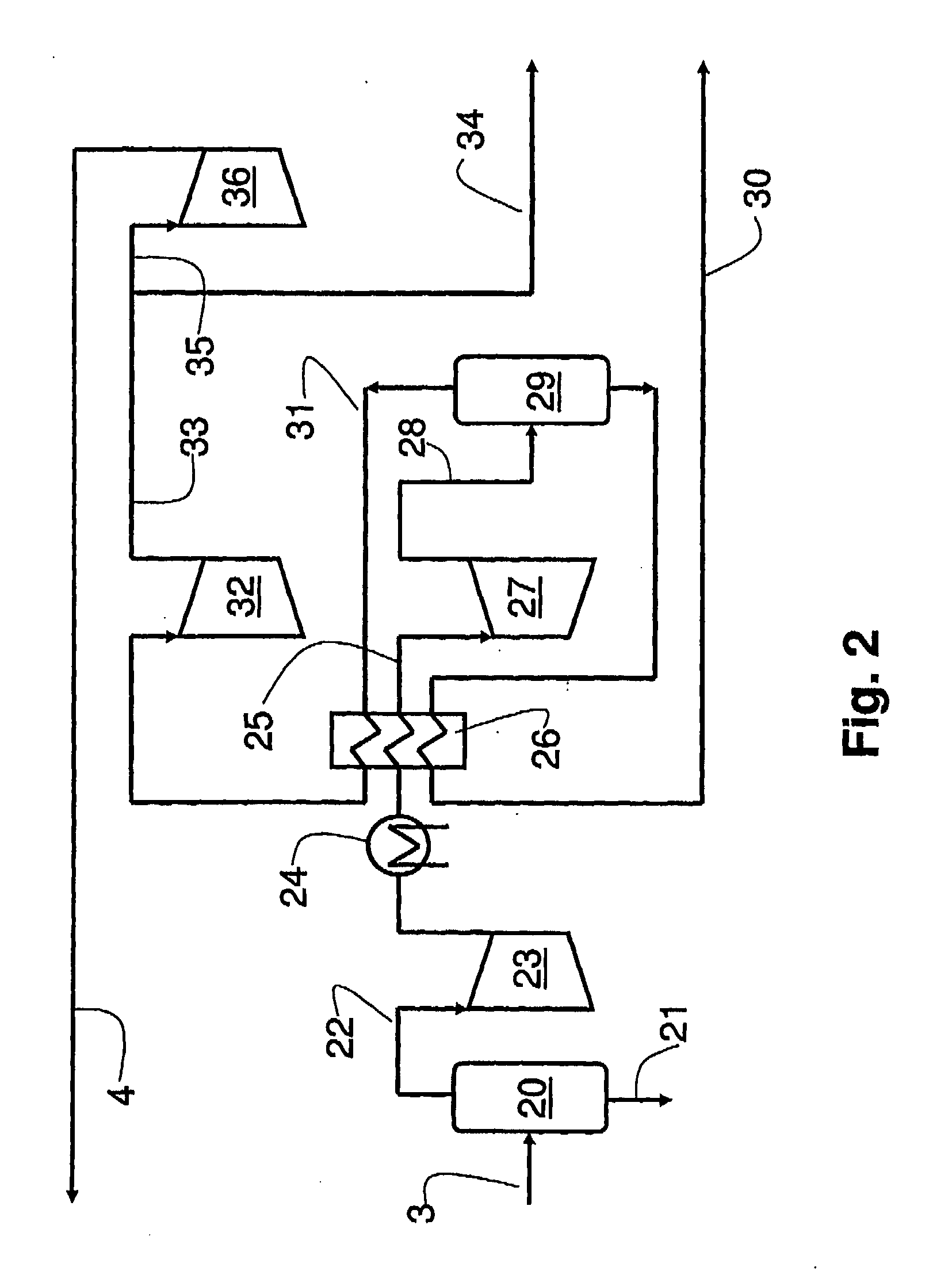Method and Plant for Transport of Rich Gas
a rich gas and pipeline technology, applied in mechanical equipment, gas/liquid distribution and storage, fuel supply equipment, etc., can solve the problems of unwelcome temperature and pressure drop along the pipeline, and inability to meet the needs of customers, so as to reduce the cricondentherm and cricondentherm, and prevent the effect of liquid condensation in the pipelin
- Summary
- Abstract
- Description
- Claims
- Application Information
AI Technical Summary
Benefits of technology
Problems solved by technology
Method used
Image
Examples
example
[0047] A natural gas having a mean molar weight of 22.2 kg / kgmol, a cricondentherm of 31° C. and a cricondenbar of 105.4 bara, is mixed with a dry gas having a mean molar weight of 16.8 kg 7 kgmol, a cricondentherm of −65.1° C. and a cricondenbar of 55.3 bara. The table below gives the cricondenbar and cricondentherm for the resulting mixture.
Natural gas to dry gas ratioCricondenthermCricondenbar1:1.8−1.7° C.88.9 bara1:2.5−7.5° C.86.8 bara
[0048] For both the ratios exemplified in the table, the cricondentherm is reduced from 31° C. to below 0° C., so that condensation of hydrocarbon liquid and the resulting multiphase current, is substantially avoided. The cricondenbar is reduced from 105.4 bara to below 90 bara, giving additional protection against condensation. It is possible to increase the amount of dry gas in the total gas mixture to give even better protection against condensation. An increased share of dry gas in the total gas, will however, reduce the capacity of the main ...
PUM
 Login to View More
Login to View More Abstract
Description
Claims
Application Information
 Login to View More
Login to View More - R&D
- Intellectual Property
- Life Sciences
- Materials
- Tech Scout
- Unparalleled Data Quality
- Higher Quality Content
- 60% Fewer Hallucinations
Browse by: Latest US Patents, China's latest patents, Technical Efficacy Thesaurus, Application Domain, Technology Topic, Popular Technical Reports.
© 2025 PatSnap. All rights reserved.Legal|Privacy policy|Modern Slavery Act Transparency Statement|Sitemap|About US| Contact US: help@patsnap.com



